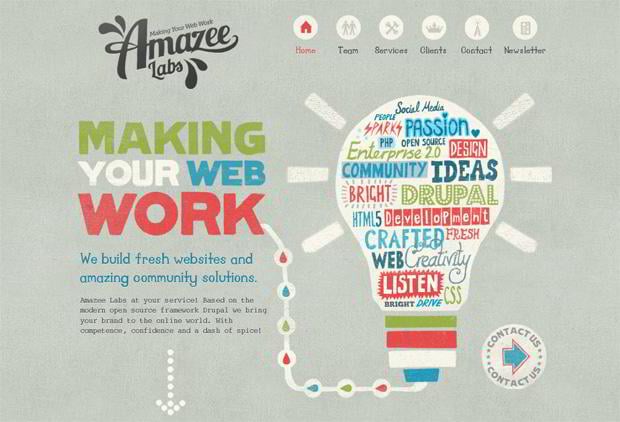Interested In Learning Just How Internet Site Design Has Transformed Over The Years? Discover The Progression From Standard, Uncomplicated Styles To User-Centered Methods That Prioritize The Requirements And Preferences Of On The Internet Visitors
Interested In Learning Just How Internet Site Design Has Transformed Over The Years? Discover The Progression From Standard, Uncomplicated Styles To User-Centered Methods That Prioritize The Requirements And Preferences Of On The Internet Visitors
Blog Article
Content Create By-Abel Cantu
In the past, web sites were easy and focused on information. Navigation was direct, and style was for desktop computers. Currently, user experience is essential. Data overviews designs for easy navigating. Responsive layouts match various gadgets. Today, dark setting decreases strain, and minimalist menus enhance navigating. Interactive functions involve users, and bold visuals stick out. AI combination boosts engagement. See how layout has actually progressed to boost your on the internet journey.
Early Days of Web Design
In the very early days of web design, simpleness preponderated. Websites were basic, with minimal shades, fonts, and formats. The focus was on supplying info rather than flashy visuals. Customers accessed the net through slow dial-up links, so rate and capability were key.
Navigating food selections were straightforward, generally located at the top or side of the web page. Internet sites were designed for desktop, as mobile surfing wasn't yet common. discover this was king, and designers prioritized very easy readability over complicated style elements.
HTML was the primary coding language utilized, and designers needed to function within its constraints. Animations and interactive functions were very little contrasted to today's criteria. https://brooksrkdwo.dreamyblogs.com/30220263/thoroughly-select-a-digital-advertising-firm-for-your-organization-by-considering-your-purposes-funds-and-competence-in-your-market-discover-more-to-achieve-success were static, with little dynamic material or customized user experiences.
Rise of User-Focused Style
With the development of site style, a shift in the direction of user-focused design concepts has come to be significantly prominent. Today, developing sites that prioritize user experience is vital for engaging site visitors and achieving organization goals. User-focused design involves understanding the demands, preferences, and behaviors of your target market to tailor the site's layout, content, and features accordingly.
Designers currently carry out detailed research study, such as individual studies and usability testing, to collect understandings and responses straight from users. This data-driven technique aids in developing intuitive navigation, clear calls-to-action, and aesthetically attractive user interfaces that resonate with visitors. By placing the customer at the facility of the layout procedure, websites can provide an extra individualized and satisfying experience.
Receptive design has likewise become a vital facet of user-focused layout, making certain that sites are optimized for different gadgets and screen sizes. This adaptability boosts access and use, dealing with the varied methods users connect with websites today. Fundamentally, https://seoplugins17384.bleepblogs.com/30373050/looking-to-improve-your-brand-name-s-visibility-on-the-internet-unlock-the-key-to-achieving-success-in-electronic-advertising-through-expert-services-that-can-revolutionize-your-firm of user-focused design represents a change towards creating electronic experiences that focus on the needs and assumptions of completion customer.
Modern Trends in Website Design
Explore the most recent patterns forming website design today. One popular trend is dark mode layout, providing a smooth and modern appearance while reducing eye stress in low-light settings. An additional essential trend is minimal navigating, streamlining food selections and boosting customer experience by focusing on essential elements. Including micro-interactions, such as computer animated buttons or scrolling results, can create a more interesting and interactive site. Receptive style remains crucial, guaranteeing smooth user experiences across different gadgets. Furthermore, making use of strong typography and asymmetrical formats can include aesthetic rate of interest and accentuate particular material.
Integrating AI technology, like chatbots for client support or personalized recommendations, enhances individual involvement and enhances procedures. Access has also become a substantial fad, with designers focusing on inclusive design methods to satisfy diverse customer requirements. Welcoming sustainability by optimizing site performance for rate and performance is one more arising trend in web design. Collaborating with user responses and data analytics to iterate and enhance layout constantly is crucial for remaining relevant in the ever-evolving digital landscape. By accepting these modern patterns, you can create an aesthetically enticing, easy to use web site that reverberates with your audience.
Verdict
As you reflect on the evolution of web site design from the early days to currently, you can see exactly how user-focused design has actually come to be the driving pressure behind contemporary trends.
Embrace the trip of change and adaptation in website design, always maintaining the customer experience at the leading edge.
Keep present with the latest trends and technologies, and never stop progressing your approach to create aesthetically spectacular and straightforward websites.
Develop, adjust, and produce - the future of website design is in your hands.
